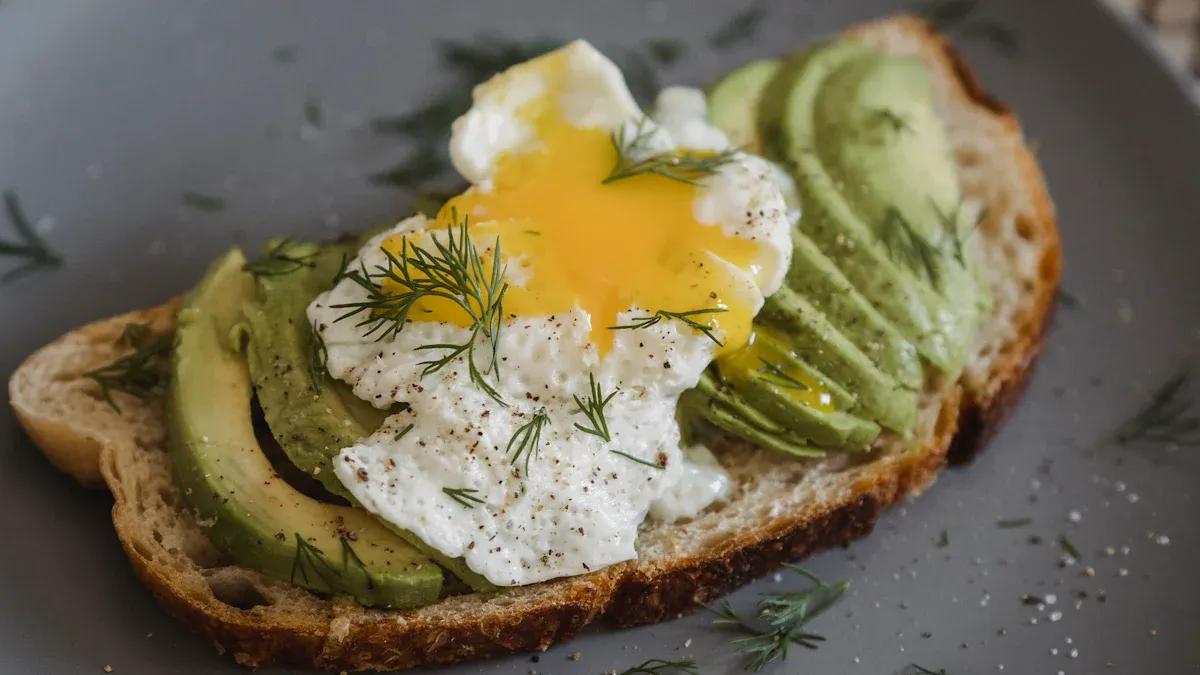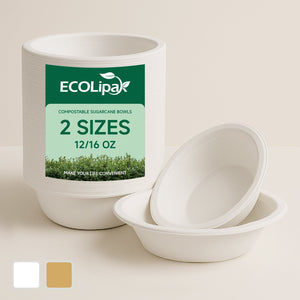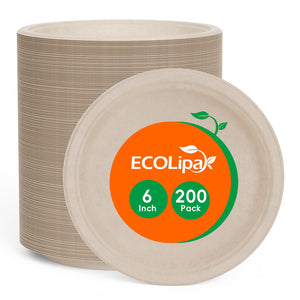Managing your morning glucose can be a daily challenge, especially for those with type 2 diabetes. This post offers simple diabetes-friendly breakfast ideas to help you succeed. A good breakfast is crucial for blood sugar management. The right healthy breakfast helps you avoid sugar spikes.
A balanced breakfast with protein, fiber, and healthy fats is key for blood sugar control and keeps you full until lunch.
These diabetic breakfast ideas make your morning simple. You can even prep your breakfast in our Sugarcane Compostable Bowls. The right breakfast helps you avoid sharp glucose changes and sugar spikes.
Key Takeaways
-
Eat a balanced breakfast with protein, fiber, and healthy fats. This mix helps control blood sugar and keeps you full.
-
Choose low-glycemic foods like Greek yogurt, oats, and berries. These foods release sugar slowly into your body.
-
Prepare your breakfasts ahead of time. Meal prepping saves time and helps you make healthy food choices.
-
Read food labels to avoid hidden sugars. Look for words like 'syrup' or '-ose' to spot added sugars.
-
Control your portion sizes. Use the Plate Method or your hand to estimate how much food to eat.
Top Diabetes-Friendly Breakfast Ideas

Finding the right breakfast can set a positive tone for your entire day. These diabetes-friendly breakfast ideas are delicious, easy to prepare, and packed with the nutrients you need to manage blood sugar effectively.
1. High-Protein Greek Yogurt Parfait
A Greek yogurt parfait is a fantastic high-protein breakfast. Greek yogurt has a very low glycemic index. This means it releases sugar into your bloodstream slowly. The protein in yogurt also helps you feel full and slows glucose absorption. You can make a delicious parfait by layering plain, unsweetened Greek yogurt with a low-glycemic berry mix. Berries are rich in fiber and polyphenols. These compounds improve your metabolic health. Combining yogurt and berries offers powerful benefits for blood sugar regulation.
Tip: Always choose plain, full-fat Greek yogurt with no added sugars. This ensures you get all the benefits without unwanted carbs.
Here is a quick look at Greek yogurt's nutritional profile.
|
Nutritional Aspect |
Value (per 100g unless specified) |
|---|---|
|
Glycemic Index |
12 (low) |
|
Net Carbs |
4 grams |
|
Protein (per 6-ounce serving) |
Approximately 16 grams |
|
Calories |
97 kcal |
|
Insulin Index |
46 |
2. Classic Avocado Toast with Egg
Avocado toast is a modern classic for a reason. It is one of the best breakfast foods for steady energy. Whole-grain bread provides fiber and essential minerals like zinc and iron. The avocado adds healthy monounsaturated fats. These fats can improve blood sugar management. Adding an egg on top boosts the protein content significantly. The combination of fat from the avocado and protein from the egg keeps you full for hours. It also ensures a slow, steady release of glucose. This prevents energy crashes. For extra flavor, try a salsa-topped avocado toast. The simple avocado egg toast is a perfect healthy breakfast.
3. Grab-and-Go Overnight Oats
Overnight oats are the ultimate quick breakfast for busy mornings. Rolled oats are a great choice for managing type 2 diabetes. Studies show oats intake can improve glycemic control and insulin sensitivity. The key is the beta-glucan fiber in oats. To prepare, you simply soak rolled oats in a liquid overnight. For a diabetes-friendly version, use unsweetened almond milk, soy milk, or skim milk. These options are lower in carbohydrates than regular cow's milk. You can also add a scoop of plain Greek yogurt for extra protein.
4. Low-Carb Scrambled Eggs with Spinach
Scrambled eggs are a timeless breakfast staple. You can make them even healthier by adding spinach. An egg is a powerhouse of protein. Spinach is packed with micronutrients that benefit people with diabetes. It contains magnesium for blood glucose control and alpha-lipoic acid, an antioxidant that reduces oxidative stress. You can also add other fiber-rich vegetables to create a colorful and satisfying vegetable omelet. This meal is low in carbs and high in protein, making it an excellent choice to start your day. An egg is a versatile ingredient for many breakfast dishes.
5. Simple Cottage Cheese with Fruit
Cottage cheese is another excellent high-protein option. A half-cup of low-fat (2%) plain cottage cheese contains about 12 grams of protein and only 5 grams of carbs. This protein helps you feel full and supports stable blood sugar. For a touch of sweetness, you can top your cottage cheese with low-glycemic fruits. Berries are a perfect choice. A cottage cheese berry bowl is both delicious and nutritious. The combination of protein from the cottage cheese and fiber from the berry mix creates a balanced meal. This simple breakfast is easy to prepare. The cottage cheese provides sustained energy.
6. Whole-Wheat Muffin with Nut Butter
A muffin can be a good breakfast choice if you select the right kind. Look for muffins made with 100% whole-wheat flour. Whole wheat has more fiber than refined flour. This fiber helps manage blood sugar levels. The glycemic index (GI) of the muffin is also important. Low-GI foods break down slowly. You can lower the muffin's overall glycemic impact by adding nut butter. The healthy fats and protein in nut butter slow down carbohydrate absorption. This leads to a more gradual rise in blood glucose.
7. Fiber-Rich Chia Seed Pudding
Chia seed pudding is a simple yet powerful breakfast. Chia seeds are incredibly rich in soluble fiber. This fiber forms a gel-like substance in your stomach. Research shows this gel can slow glucose absorption by over 50%. This effect helps prevent sharp blood sugar spikes after your meal. To make it, you just mix chia seeds with a liquid like unsweetened almond milk and let it sit. A typical serving size is about 1/4 cup of chia seeds per serving. This makes a pudding of about one cup.
8. Savory Breakfast Burrito
A breakfast burrito can be a great part of your diabetic breakfast ideas. You need to choose your ingredients wisely. Use a low-carb, whole-wheat tortilla. Fill it with lean proteins like scrambled eggs or black beans. Add plenty of vegetables like bell peppers, onions, and spinach. You can also include a small amount of avocado for healthy fats. This combination of protein, fiber, and healthy fats makes for a filling and blood-sugar-friendly breakfast. The beans add extra fiber and plant-based protein.
9. Smoked Salmon on Whole-Grain Crackers
For a savory and elegant breakfast, try smoked salmon on whole-grain crackers. Smoked salmon provides high-quality protein and omega-3 fatty acids. Whole-grain crackers offer fiber to help with digestion. For example, two Carr's® Whole Wheat Crackers have about 2 grams of fiber. Top the crackers with salmon and a dollop of cream cheese or a slice of avocado. This quick and easy meal is one of the most convenient diabetes-friendly breakfast ideas.
10. Customizable Smoothie: Quick Diabetic Breakfast Ideas
A smoothie can be a fantastic breakfast when you control the ingredients. Avoid pre-made smoothies, which are often high in sugar. Make your own at home.
-
Protein: Use a quality protein powder. Whey-based or plant-based options like hemp or pea protein work well.
-
Healthy Fats: Add a source of healthy fat. Good choices include nut butter, chia seeds, flax seeds, or avocado.
-
Liquid: Use an unsweetened liquid base like almond milk or water.
-
Fruit: Stick to a small portion of a low-glycemic berry. A great example is one of the berry mint kefir smoothies. This customizable approach ensures your smoothie is packed with nutrients, not sugar.
Eco-Friendly Breakfast Prep & Serving
A healthy breakfast routine is easier when you plan ahead. Preparing your meals in advance saves time and helps you make better food choices, especially on busy mornings.
Meal Prep with Ecolipak Bowls
Many of the best breakfast ideas, like overnightats or chia pudding, are perfect for meal prep. Planning your meals can also help reduce household food waste. You can prepare several days' worth of breakfast at once. This requires reliable containers for storage and transport.
Green Pack, Go for ECOLipak! Align your healthy eating habits with a healthier planet by choosing sustainable containers.
Ecolipak's Compostable Sugarcane Bowls are an excellent solution. These bowls are sturdy and leakproof, so you can take your yogurt parfait or savory egg scramble on the go without worry. You can safely reheat your breakfast in the microwave. For example, an egg and vegetable scramble is easy to warm up. Best of all, the bowls are BPI-certified compostable. They break down into nutrient-rich compost, reducing landfill waste. Choosing these bowls means you support both your health and the environment.
Smart Ingredient Swaps
You can make any breakfast healthier with a few simple changes. Smart swaps increase fiber and nutrients without sacrificing flavor. This helps you feel full and manage blood sugar.
-
Boost Your Egg Dishes: Add spinach, peppers, or black beans to your morning egg for extra fiber.
-
Rethink Your Flour: Use almond or coconut flour instead of white flour in muffins.
-
Power Up Your Smoothies: Mix in high-fiber berries, ground flaxseeds, or chia seeds.
-
Choose Better Toppings: Top your Greek yogurt with berries, nuts, and seeds instead of sugary granola.
These small adjustments make a big difference in your daily breakfast nutrition.
Understanding Portion Control
Controlling portion sizes is crucial for managing blood sugar. The American Diabetes Association offers a simple guide called the Plate Method.
-
Fill half your 9-inch plate with non-starchy vegetables.
-
Fill one-quarter with a lean protein, like an egg or chicken.
-
Fill the last quarter with carbohydrate foods, such as whole grains or fruit.
You can also use your hand to estimate portions when you don't have measuring tools.
A serving of protein (3 ounces) is about the size of your palm. A single serving of fruit is roughly the size of your fist. This makes it easy to build a balanced breakfast anywhere.
Tips for a Perfect Diabetes-Friendly Breakfast
Creating the perfect diabetes-friendly breakfast involves more than just choosing the right foods. You need to understand what is in your food and how it affects your body. These simple tips will help you build a better breakfast every day.
Always Read Nutrition Labels
Food labels are your guide to making smart choices. Companies often hide sugars in foods you might not expect. You can become an expert at spotting them. Look for sugar near the top of the ingredient list. Also, watch out for words that mean sugar.
-
Syrups like corn syrup or rice syrup.
-
Sweeteners such as honey, molasses, or agave.
-
Words ending in "-ose," like sucrose, dextrose, or fructose.
Checking labels helps you avoid unwanted ingredients and control your morning glucose levels. This is a key step in finding great diabetes-friendly breakfast ideas.
Balance Your Macronutrients
A balanced breakfast is essential for managing type 2 diabetes. Your meal should include a mix of protein, fiber, and healthy fats. Studies show a breakfast with 20-30 grams of protein helps stabilize your blood glucose. For fiber, aim for around 35 grams daily to improve your health. A good starting point for your meal's balance is about 50% carbohydrates, 20-25% protein, and 25-30% fat. This combination provides steady energy and keeps you feeling full.
Stay Hydrated in the Morning
Drinking water is a simple but powerful habit. Your body needs water to function correctly. Staying hydrated helps your kidneys flush out excess sugar through urine. Start your day with a large glass of water. You can even add a squeeze of lemon for flavor.
Water is a zero-calorie, zero-sugar drink. It is the perfect beverage to support your health goals.
Making hydration a part of your morning routine is an easy way to support your overall wellness. It complements any healthy breakfast you choose.
You can start your day with a delicious diabetes-friendly breakfast. This meal sets the tone for your entire day.
The secret is balancing protein, fiber, and healthy fats.
This powerful trio helps you avoid sharp sugar spikes and control your morning glucose. Try these diabetes-friendly breakfast ideas to manage your glucose and prevent sugar spikes. Take charge of your mornings for better health all day long. You've got this! 💪
FAQ
Why is breakfast so important for managing diabetes?
A balanced breakfast helps stabilize your morning blood sugar. It provides steady energy and prevents large glucose spikes. This meal also keeps you feeling full, helping you avoid overeating later. You set a positive tone for your health all day long.
Can I eat fruit for breakfast if I have diabetes?
Yes, you can enjoy fruit. Choose low-glycemic options like berries, apples, or pears. Always watch your portion sizes. Pairing fruit with a protein or healthy fat helps slow down sugar absorption and manage your glucose levels effectively.
What are the best drinks to have with a diabetic breakfast?
Water is your best choice. It has zero sugar and calories. Unsweetened coffee and tea are also great options. You should avoid sugary juices and sodas. These drinks can cause rapid blood sugar spikes and offer very little nutritional value.
How can I make meal prep easier for busy mornings?
Meal prep makes mornings much easier. Prepare recipes like overnight oats or egg scrambles in advance. Use convenient, microwave-safe containers for easy storage and reheating. This simple habit helps you stick to your healthy eating plan throughout the week. ☀️









